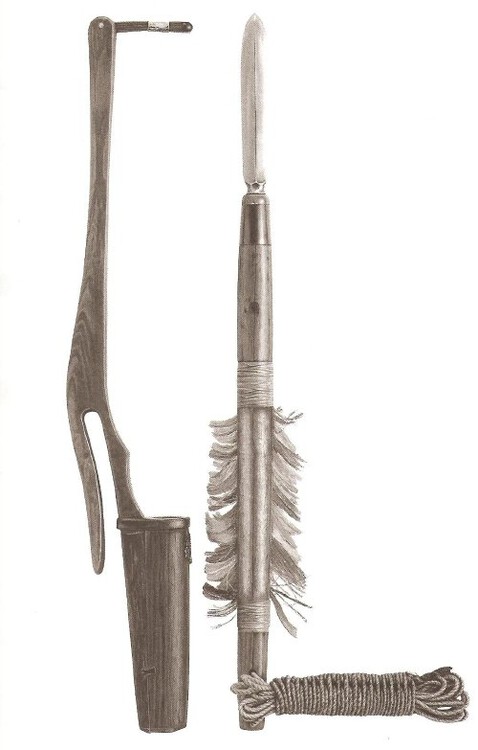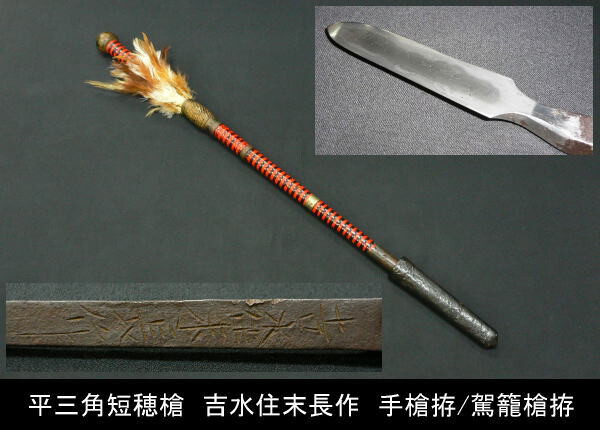-
Posts
2,121 -
Joined
-
Last visited
-
Days Won
8
Content Type
Profiles
Forums
Events
Store
Downloads
Gallery
Everything posted by Carlo Giuseppe Tacchini
-
As suggested the topic's one is Sasaho Hira sankaku tsukuri Yari. But this type is also made in Ryo shinogi form, which the hunting ones belong to. As a not-so-strict rule, difference between hunting and fighting types of the Ryo Shinogi variation is in the carving. Hunting ones used to kill inoshishi usually have carving(s) that completely pass thru the blade.
-

Question concerning hara-ate construction
Carlo Giuseppe Tacchini replied to Birdman's topic in Katchu
Not something that falls in the "Do it yourself" realm, IMHO. This is meant to everybody that have similar repairs to be done and more for the sake of the very, very few professionals in this field that are out there, the only ones that can (and should) properly repair such items. Andy Mancabelli, a professional that have the permission to use the Miura name to continue Miura's Sensei line, posted this on another board (Andi, you've a PM there...): "Regarding the various information on urushi in the blogs.... a lot of it is wrong, from the names to the uses. Different times and places used different varieties of urushi and shitaji and different components of shitaji etc. Every time I restore a piece (my specialty being sengoku period) I have to match the ingredients as best I can to the original. I never skimp. Different seasons change the drying times dramatically even if you have a controlled Muro (humidor) because I have found that pressure systems greatly effect drying times. Because of this the exact ambient humidity/temperature in the dead of winter and dead of summer are harder to control than Spring and fall which are the best. After a few years of experience you can start to understand what level of refinement old urushi was; the pigment used, and in some cases what time of the season it was applied. I have worked with the socalled Ki urushi which is actually said by urushi experts to be another word for seshime. The few seshime that I have used so far has been crap in my opinon and out of china - problems experienced with the Chinese "garbage" are: inconsistent color, bad smell, particles, inconsistent drying, drying too quick. Now I only use Japanese urushi for everything. It costs at least two to three times the price but its worth it. The chinese stuff is only good for shitaji in my opinion and I dont even use it for that. I have many types of urushi and pigments that I use regularly. The reason many shokunin like "shin urushi" and other fake urushi substitutes is that it dries fast no matter what the ambient humidity/temperature is, its consistent, and the color is nearly the same color as when it dries. Real urushi with Red pigment (Mercuric oxide - which is dangerous... but proper) dries around ten shades darker than when it is applied. Red urushi is an art in and of itself - matching it is even more difficult. In the olden days there were shokunin that specialized in Red lacquer." I strongly encourage to give the very few, strongly devoted craftmen the opportunity to work and maintain the *real* job alive. Very few still around, being possibly Andy the youngest. Let's hope not the last. -
Makes sense to me too. How about the short, tapering shaft ? Might be the shirasaya mounting was intended to follow a rule or is just what it was supposed to be even if the blade is not originally intended for a Kago Yari ? Shouldn't be a problem of resistance in a "resting saya" so seems not related to the lenght of the nakago., whenever the blade wasn't originally intended to be a Kago Yari.
-
In the country that is supposed to have given roman laws to the world, such a legal action is not possible. The whole Japanese collection of Castello Sforzesco has been buried the same (bet much worse) way for lack of funds (and space) around 20 years ago. The vast majority of the items are "legati", meaning inherited from goodwilling collectors mostly before the war.
-

Another unusual bokken.
Carlo Giuseppe Tacchini replied to estcrh's topic in General Nihonto Related Discussion
Methink it's custom-made, not taken from the net. Possibly for a dojo. It reminds me a couple that valdek Laur made for me years ago about Yari tipologies and the changes of Nihonto shapes during the centuries. -

WE SELDOM DO THIS
Carlo Giuseppe Tacchini replied to Stephen's topic in General Nihonto Related Discussion
Already done on FB, but can't miss to add me at Stephen's thread. Happy birthday Moriyama-San. -

Where were the yari?
Carlo Giuseppe Tacchini replied to IanB's topic in General Nihonto Related Discussion
Piers, you really are too forgiving. -
Rust color *seems* the same even on the tang part that is enlarging, before the polish. If genuine, such a shape *might* be intended to put more weigth toward the tip. Maybe a real Uchine put into a fantasy mount ? However I can't see the need of *two* Mekugiana on such a short tang for a throwing weapon. EDIT : naaaa, Kerakubi looks too odd.
-
Hi Ian. This one is definitively not my cup of tea (bet yours neither), but interesting nonetheless. This mount might support at least the possiblity croc was used for some reason (resistance ? fashion ?) on yari as well. To the owner of the pic : Jo, the pic is on my photobucket. If you've any problem with my use of it drop me a line.
-
The palanquin in Museo d'Arte Orientale is, indeed, for a lady. I can't dismiss the option of "export items" as the collection Enrico di Borbone put together in 1887 had and still have such items (as most XIX century collections). My feeling is Kago Yari were of no practical use, status symbols or at best just a sort of insurance for filty riches (possibly ladies only, not supposed to carry swords), sensibly shorter and more elaborated than usual cut-down yari out there. Anyway the term exists and needed a pic. I' be grateful if anybody can post a surely legitimate item (or evidences of their export-item nature).
-
Never stated it was a genuine masterpiece. I stated it fit better the "palanquin yari" description. Everything in that Yari looks new and the blade looks very poor in front of the mounting. The Hadome is a not functional, cathing-eyes addition. However, *this* is how palanquin Yari should look like.
-
Methink both Johnb and Jacques are right. Ura of the kissaki might have had polishing problems. Yokote seems disaligned and Hi shorther. But might be the angle of the pics.
-
This should be easy enough to be understood by everybody... Title is : Quality over quantity





